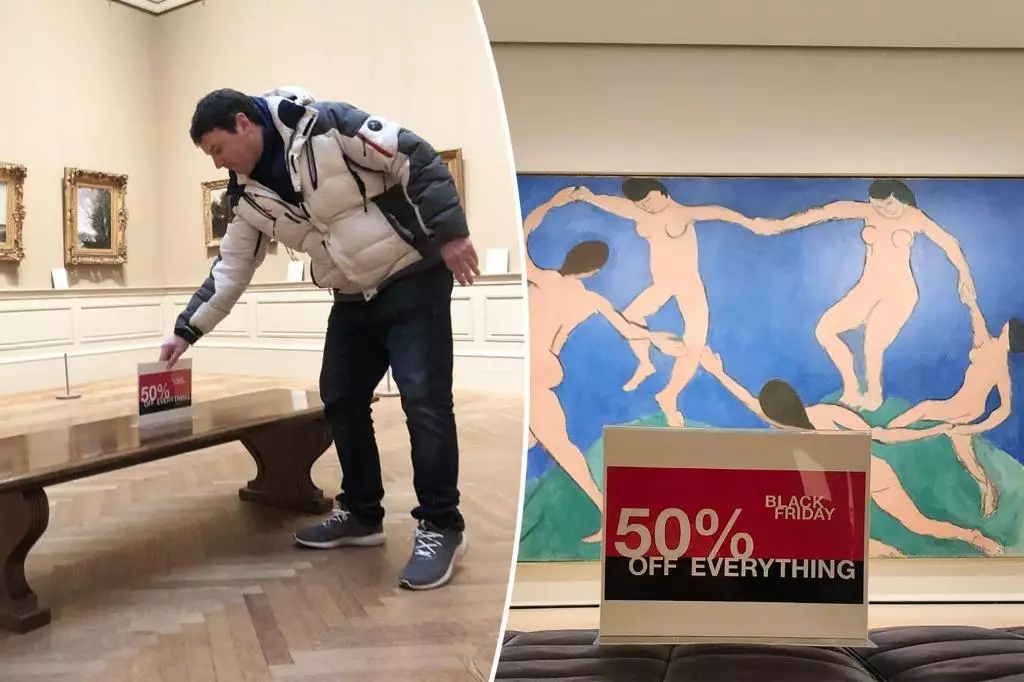In a startling display of the intersection between art and commerce, a 74-year-old fruit vendor from New York City found himself at the center of a media whirlwind after a banana duct-taped to a wall sold for a staggering $6.2 million at auction. While many marveled at the audacity of the piece, its price tag raised eyebrows and ignited a debate over the value of art in today’s consumer-driven society. This incident not only highlights the absurdities inherent in high-stakes art sales but also invites deeper contemplation about the cultural significance of what is being offered in galleries worldwide.
Enter Nelson Saiers, a former banker turned artist who has garnered the nickname “Warhol of Wall Street” for his provocative commentary on the financial world. In a bold move that many would classify as performance art, Saiers staged a guerilla installation at the Museum of Modern Art (MoMA) on Black Friday to critique the prevailing mentality surrounding multimillion-dollar contemporary art sales. By plastering “Black Friday 50% Off Everything” signs throughout the museum, including directly in front of Henri Matisse’s iconic painting of dancing women, Saiers aimed to confront viewers with a striking contrast: the commodification of culture versus the inherent beauty and depth found in genuine artistic masterpieces.
Saiers’ installation was not merely about the banana—it served as a catalyst for a discussion on the commodified nature of art today. He articulated his intent to juxtapose “our hyper-materialistic, money-driven world” against the backdrop of profound cultural contributions, pointing out that even revered institutions like MoMA often find themselves overshadowed by commercially driven art pieces. The banana, being a mere object of value in an auction scenario, stands in stark contrast to the cultural resonance of a Matisse painting—an artwork that embodies creativity, technique, and emotion.
While the reception of his audacious statements remains unconfirmed, Saiers has a history of scrutinizing established art institutions with his thought-provoking stunts. Previous instances, such as the distribution of fake brochures at the Metropolitan Museum of Art, underscore his commitment to inciting dialogue about art’s value beyond financial metrics. By challenging the hierarchy of the art world, Saiers embodies a necessary voice calling for reevaluation of what constitutes art—encouraging viewers and institutions alike to reflect on the purpose and significance of art in society.
As contemporary art continues to grapple with its place in an increasingly commercialized landscape, the actions of both the NYC fruit vendor and Nelson Saiers serve as essential provocations. They challenge us to question the metrics we use to appraise art and offer a much-needed critique of the systems that prioritize monetary value over genuine cultural significance. In doing so, they invite us to rediscover the true essence of art—not as a commodity to be bought and sold but as a profound expression of human creativity deserving of appreciation.

